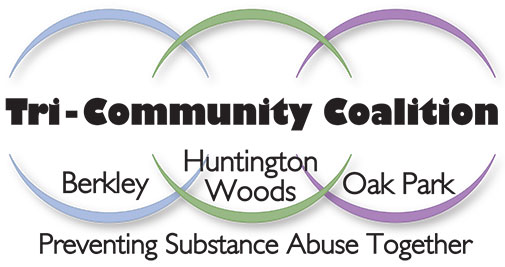CADCA Forum Attendees...Welcome!
This page is dedicated to Tri-Community Coalition's presentation for the 2015 CADCA Leadership Forum. Below you will find TCC's presentation, handouts, and additional resources. This year's presentation is titled, "Prevention Starts with Y.O.U.: Young, Optimistic, and United Against Substance Abuse" and focuses on how to engage youth in community development.
We hope this helps other coalitions and organizations empower young people and remember that our youth are our communities' strength!
Prevention Starts With Y.O.U.:
Young, Optimistic, & United Against Substance Abuse
Y.O.U. stands for Young, Optimistic, and United against substance abuse. The purpose of this group is to equip our youth with communication, leadership, and coping skills to protect against substance use. Y.O.U. unites youth and community members in order to promote a healthier community and prevent substance abuse.
Engaging youth is essential for community and organizational development. This handout will provide key points that address the importance of youth engagement and how to engage youth in your local communities.
Engaging youth is essential for community and organizational development. This handout will provide key points that address the importance of youth engagement and how to engage youth in your local communities.
Why engage youth in program design, implementation, & evaluation?
Because youth are the beneficiaries of local community resources and services, they are directly impacted by the decisions adults make. If young people are the experts on what works best for them, why not involve them in the decision-making process? Young people are a strength of the community because they offer unique perspectives and insight.- Youth Needs
- Engaging youth in program development empowers young people to be active participants in their community and promotes belonging, mastery, independence, and generosity1, also known as the Circle of Courage (Ex. 1 of Handout 2).
How do we engage our youth?
Authentic Youth Engagement- To successfully engage youth requires an authentic approach in which adults initiate dialogue with young people, ask their perspective and opinions, and listen intently2.
- Demonstrated in Ex. 2 of Handout 2, there are different kinds of adult-youth relationships when engaging youth3. Seeing young people as partners in the developmental process is ideal. This means youth are the decision-makers, stakeholders, and active participants.
Cross-Sector Youth Engagement
Several types of institutions make up a community: local businesses, governments, schools, families, organizations, public services, etc. Cross-sector youth engagement requires collaborating with these different types of institutions as a holistic approach to support a healthy community.Key Points and Potential Challenges2
Authentic youth engagement can be difficult to achieve. Here are some tips to overcoming these challenges.- Ask Youth First – With the ever-changing generations, it is difficult to know what is best for young people. Engaging in dialogue with youth is the first step to overcoming these challenges.
- Accessibility – Encourage youth participation by having meetings in a welcoming environment that is conveniently located with access to transportation. Be conscientious of meeting times by scheduling consistent and frequent meetings, and avoid conflicting with school.
- Be Clear – Be clear with rules, roles, and expectations. Transparency and communicating free of adult jargon will build rapport among adults and youth.
- Expression – Encourage freedom of expression through providing a fun, creative environment.
- Keep It Short – Keep speeches and distribution of information short (about ten minutes) to engage young participants.
- Keep Up With Technology – Technology changes every year with new ways of communicating and interacting with each other. An organization needs to be technologically competent to be effective in their youth engagement.
- Make It Fun – Open each meeting with an icebreaker or hands-on activity. Using humor can help the group feel at ease.
- Refreshments – This is extremely important! Being hungry can be very distracting, so bring snacks and drinks to help the group relax and stay focused.
Tri-Community Coalition Events & Programs
Below lists TCC events that brings youth together with different community institutions:- Dialogue Day – Local Community Leaders & Members
- Dialogue Day aims to bring young people and local community members (judges, politicians, parents, etc.) together to discuss the variety of issues young people experience in the home, at school, and in the community at large.
- Night Court – Law Enforcement
- A mock trial involving real judges, lawyers, and law enforcement to educate local youth about the consequences of poor decisions.
- Sticker Shock – Local Businesses
- Young people work with local businesses to prevent selling to minors by putting warning stickers on alcohol.
- Kick Butts Day – Peer to Peer
- A national event that invites youth to advocate for tobacco awareness and stricter tobacco policies in their communities. Our local youth use this day as an opportunity to educate their peers on the effects of tobacco use.
References and Additional Resources
References:
1 2008 Positive Youth Development Toolkit by National Resource Center for Youth Services
Toolkit that uses youth engagement as a strategy for increasing positive youth experiences.2 Center for the Study of Social Policy. 2007. Engaging Youth in Community Decision Making.
3 Innovation Center for Community and Youth Development. 2005. Reflect and Improve: A Tool Kit for Engaging Youth and Adults as Partners in Program Evaluation.
Additional Resources:
- The Freechild Project Youth Engagement Workshop Guide by Adam Fletcher
Useful guide to engaging youth. Several exercises to use within your organization to implement youth-driven strategies. - Strengthening Communities Through Youth Participation by ACT for Youth Center of Excellence
Excellent guide to engaging youth to participate in strengthening your community.



